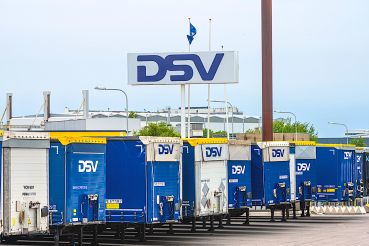Demand for Data Centers to Grow in 2023 as Supply Chain Hampers Construction: Report
By Celia Young April 13, 2023 6:00 am
reprints
The rise of artificial intelligence (AI) technology and the growing amount of data generated by companies will drive demand for data centers in 2023, but supply chain issues and energy constraints could make it difficult to bring new facilities online, according to a new JLL report.
The number of hyperscale sites — larger data centers operated by companies that include Google (GOOGL), Microsoft (MSFT) and Amazon (AMZN) — is expected to grow to 1,000 locations worldwide by 2024 from just 700 as of 2021, according to the report.
There are 314 new hyperscale sites under construction globally. But, data centers are taking longer to come online, with developers pushing back move-in times from around 12 to 16 months to 24 months thanks to delays in getting equipment, according to the report.
“These data centers are using very specific semiconductors,” Kari Beets, a senior manager on JLL (JLL)’s industries research team, said. “Starting with the pandemic there were supply chain delays … and once you get the supply chain backed up it’s hard to ramp it back up and get it on time again, so it’s taking longer to deliver [space].”
There’s plenty of demand for that new space thanks to an influx of new AI programs like ChatGPT and a growth in the amount of data generated from remote work and streaming services, leading companies to pre-lease space, according to the report.
Last year, companies leased up 1,713.57 megawatts in data centers, an increase from the 1,058.6 leased in 2021, the report found. And it isn’t expected to slow down soon as data-hungry AI programs get more advanced and use more parameters — or variables that form an artificial neural network — Beets said.
“Generative AI and ChatGPT are running billions of parameters by computer,” Beets said. “There’s also a need for labs to experiment with generative AI, and those labs are really data centers — servers that they are running this information through.”
It isn’t just a delay in new supply expected to hamper the sector. Northern Virginia, the largest data center region in the world, does not have enough electrical power to meet current demand and the centers themselves are becoming more difficult to staff, Beets said.
Roughly 53 percent of data center providers said they struggled to find qualified candidates for jobs in 2022, compared with 38 percent who said so in 2018, according to the report. Nearly half of the global data center workforce has more than 20 years of experience and could retire within the next decade.
Those staffers could be replaced by AI programs able to monitor the performance, efficiency and cooling systems of data centers, with a report from management consultancy firm Gartner estimating half of all cloud data centers will use AI by 2025. That won’t help immediately, as the technology isn’t advanced enough yet to be a viable substitute for human beings, according to the JLL report.
Celia Young can be reached at cyoung@commercialobserver.com.


